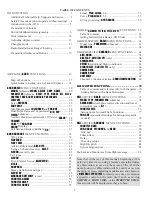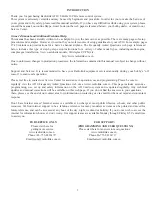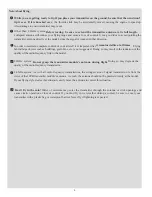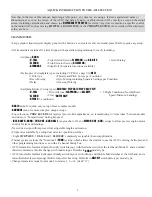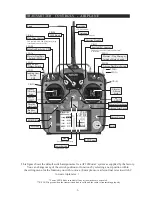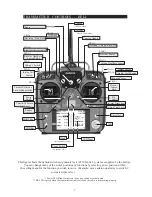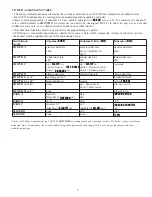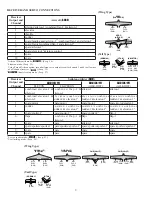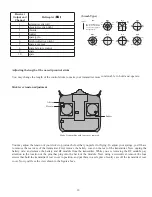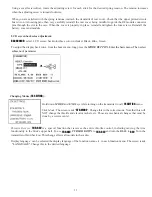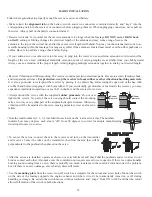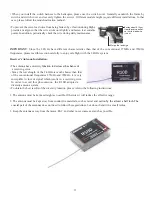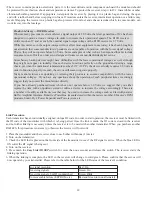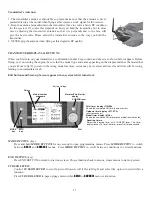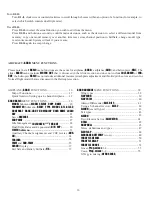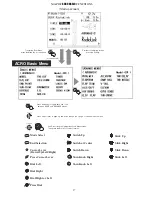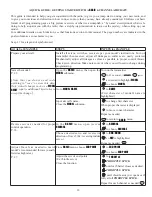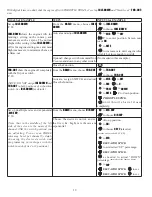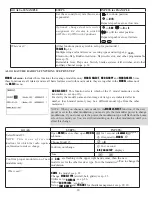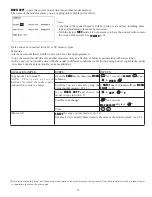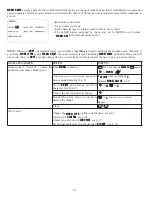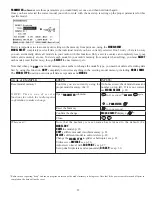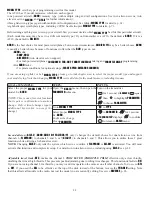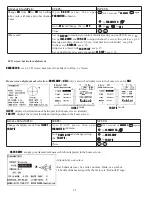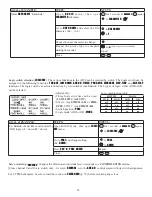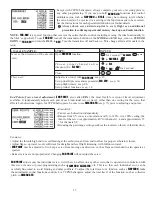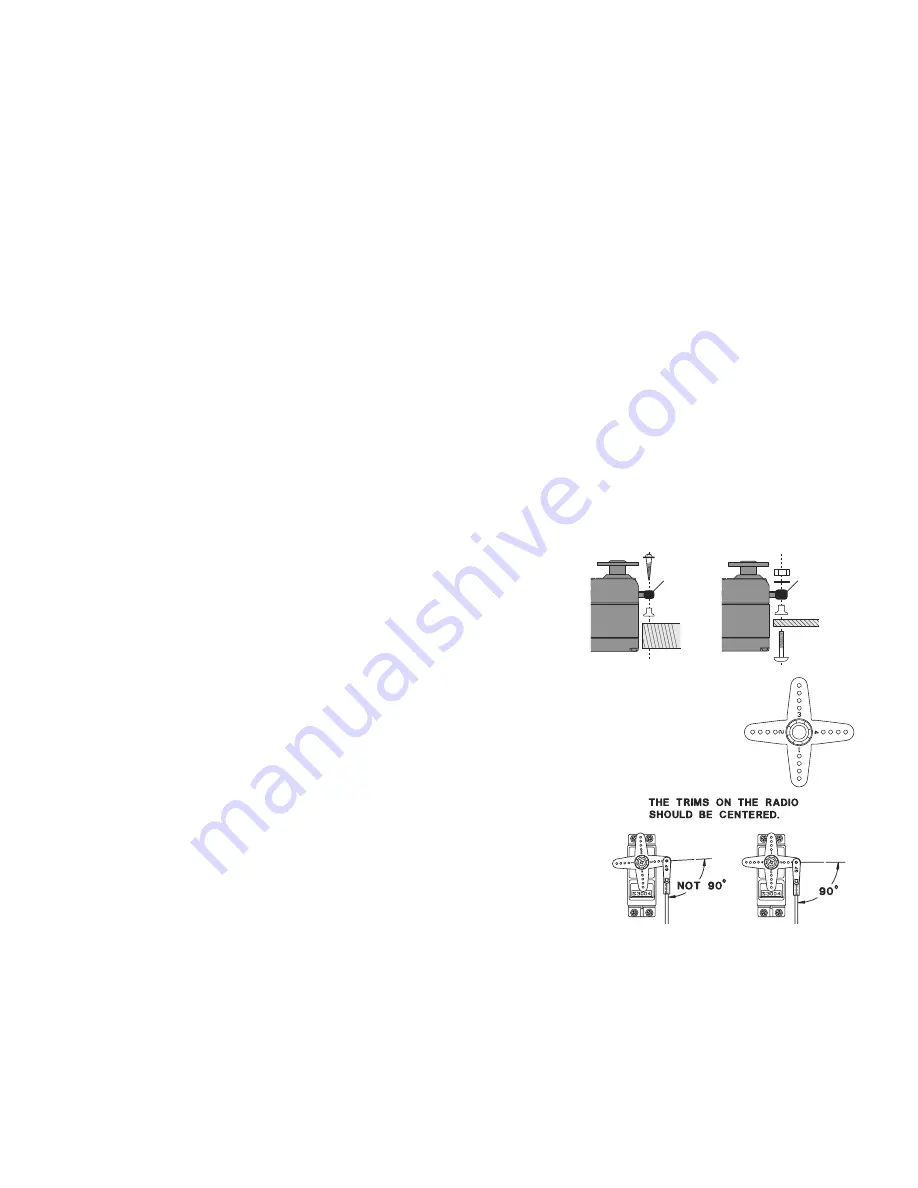
12
RADIO INSTALLATION
Follow these guidelines to properly mount the servos, receiver and battery.
• Make certain the
alignment tab
on the battery, switch and servo connectors is oriented correctly and “keys” into the
corresponding notch in the receiver or connectors before plugging them in. When unplugging connectors, never pull on
the wires. Always pull on the plastic connector instead.
• Receiver Antenna: It is normal for the receiver antenna to be longer than the fuselage.
DO NOT cut or fold it back
on itself.
cutting or folding changes the electrical length of the antenna and may reduce range. Secure the
DQWHQQDWRWKHWRSRIWKHYHUWLFDO¿QDQGOHWWKHH[FHVVZLUHOHQJWKWUDLOEHKLQG<RXPD\UXQWKHDQWHQQDLQVLGHRIDQRQ
PHWDOOLFKRXVLQJZLWKLQWKHIXVHODJHEXWUDQJHPD\VXIIHULIWKHDQWHQQDLVORFDWHGQHDUPHWDORUFDUERQ¿EHUSXVKURGVRU
FDEOHV%HVXUHWRSHUIRUPDUDQJHFKHFNEHIRUHÀ\LQJ
• If your aileron servo (or others) are too far away to plug into the receiver, use an aileron extension cord to extend the
length of the servo lead. Additional
Radiolink
extension cords of varying lengths are available from your hobby dealer.
Always use an extension of the proper length. Avoid plugging multiple extensions together to attain your desired length.
5HFHLYHU9LEUDWLRQDQG:DWHUSURR¿QJ7KHUHFHLYHUFRQWDLQVSUHFLVLRQHOHFWURQLFSDUWV%HVXUHWRDYRLGYLEUDWLRQVKRFN
and temperature extremes.
For protection, wrap the receiver in foam rubber or other vibration-absorbing materials.
It is also a good idea to waterproof the receiver by placing it in a plastic bag and securing the open end of the bag with
a rubber band before wrapping it with foam rubber. If you accidentally get moisture or fuel inside the receiver, you may
experience intermittent operation or a crash. If in doubt, send the receiver for service.
Servo
Rubber
grommet
Servo
Rubber
grommet
• Always mount the servos with the supplied
rubber grommets
. Do not over
tighten the screws. No part of the servo casing should contact the mounting
UDLOVVHUYRWUD\RUDQ\RWKHUSDUWRIWKHDLUSODQHKHOLFRSWHUVWUXFWXUH2WKHUZLVH
YLEUDWLRQZLOOEHWUDQVPLWWHGWRWKHVHUYRFDXVLQJSUHPDWXUHZHDUDQGRUVHUYR
failure.
• Note the small numbers (1, 2, 3, 4) molded into each arm on the 4-arm servo arms. The numbers
indicate how many degrees each arm is “off” from 90 degrees to correct for minute manufacturing
deviations from servo to servo.
• To center the servos, connect them to the receiver and turn on the transmitter
and receiver. Center the trims on the transmitter, then find the arm that will be
perpendicular to the pushrod when placed on the servo.
• After the servos are installed, operate each servo over its full travel and check that the pushrods and servo arms do not
bind or contact each other. Also make sure the controls do not require excess force to operate. If there is an objectionable
buzzing sound coming from a servo, there is probably too much resistance in the control. Find and correct the problem.
Even if there is no servo damage, excess battery drain will result.
• Use the
mounting plate
IURPWKHUHFHLYHURQRIIVZLWFKDVDWHPSODWHIRUWKHFXWRXWDQGVFUHZKROHV0RXQWWKHVZLWFK
on the side of the fuselage opposite the engine exhaust, and where it won’t be inadvertently turned on or off during
handling or storage. Be certain the switch moves without restriction and “snaps” from ON to OFF, and that the cutout
allows full motion of the switch in both directions.


